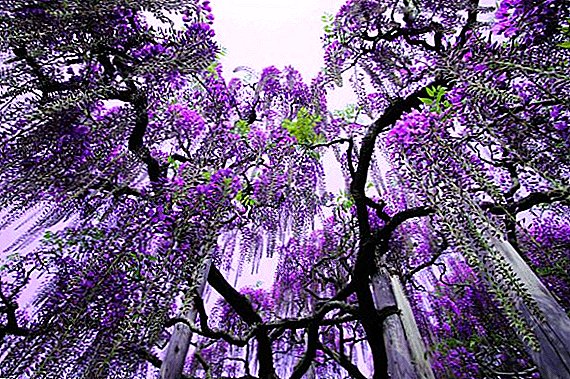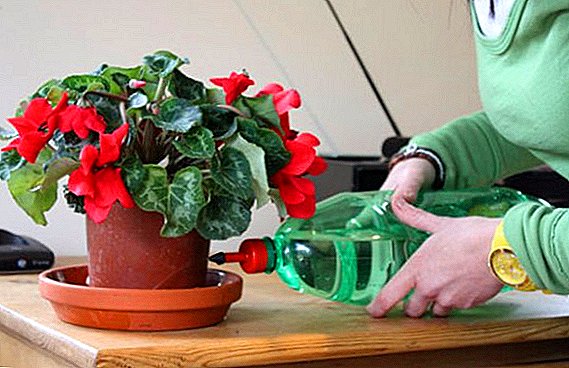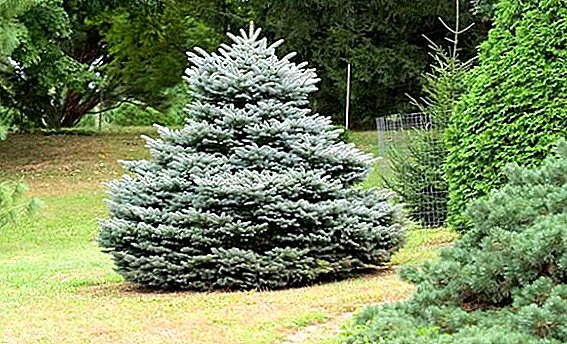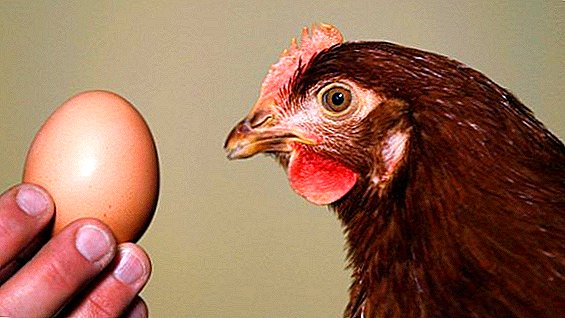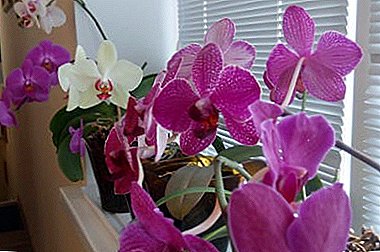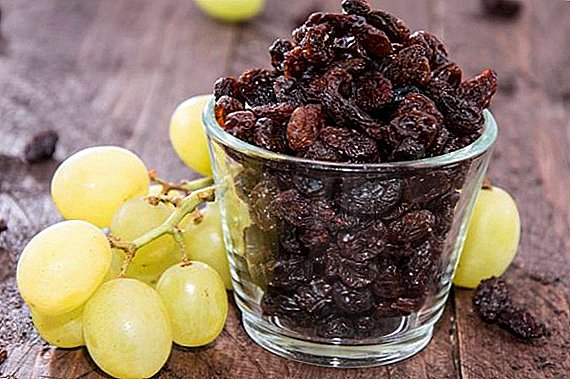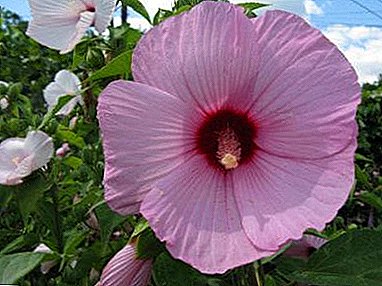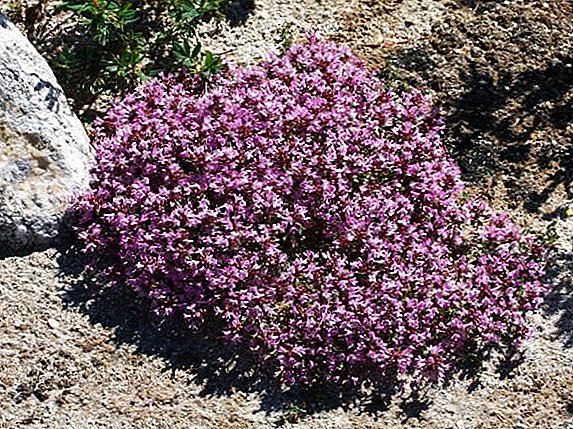 A small fragrant grass - thyme, covering dry and stony solar patches of flowering carpet, has long attracted the attention of man. The ancient Egyptians used thyme for ritual purposes.
A small fragrant grass - thyme, covering dry and stony solar patches of flowering carpet, has long attracted the attention of man. The ancient Egyptians used thyme for ritual purposes.
Ancient scientists (Avicenna, Dioscorides, Theophrastus) wrote about the wonderful properties of thyme (antiviral, antifungal and antibacterial). The Greeks called this plant "the breath of life."
In ancient Rome, it was believed that thyme gave a man strength, masculinity and potency. The Slavs believed that by burning the sprigs of thyme and breathing in smoke, they could meet the gods and the spirits of their ancestors.
Thyme, also known as thyme, continues to amaze today - modern scientists state that disease-causing microbes have not developed resistance to thyme.
Thyme: plant description
 Thyme (lat. "Thymus") has many different names: Swan, Bogorodskaya grass, lemon scent, thyme, Chavor, creeping thyme, incense, borage pepper, etc.
Thyme (lat. "Thymus") has many different names: Swan, Bogorodskaya grass, lemon scent, thyme, Chavor, creeping thyme, incense, borage pepper, etc.
Thyme genus unites about 400 species, which are widely represented in Eurasia, America and North Africa. Most of its representatives have similar features:
- undersized perennial shrub (height varies depending on the type and variety from 5 to 35 cm);
- lignified lying (or creeping) stems with adventitious roots, covered with brown bark;
- peduncle branches with villi, herbaceous and erect;
- rigid leaves are located opposite, color from yellow to dark green;
- the shape and size of the leaves depends on the species (oblong, round, etc);
- small flowers in the inflorescences (basic shades - pink, white, purple, in hybrid varieties more rich colors);
- pleasant spicy (warm) flavor.
Did you know? Thyme contains acids (quinic, caffeic, oleic, ursuloic, oleanolic, etc.), gum, vitamin C, flavonoids, minerals, etc. Olive oil, infused with thyme, has long been used as a strong antifungal, antiviral, and antibacterial agent. Thyme is a strong aphrodisiac (contains thymol and carvacrol). When coughing, high blood pressure, thyme extracts and teas help to increase immunity.
The main types of thyme
 Unpretentious plant mastered the space of Eurasia, America, North Africa. The extensive genus Thyme is represented by a large number of species (among them there are those that are difficult to classify even for specialists). Main types:
Unpretentious plant mastered the space of Eurasia, America, North Africa. The extensive genus Thyme is represented by a large number of species (among them there are those that are difficult to classify even for specialists). Main types:
- thyme ordinary (Thymus vulgaris);
- creeping thyme (Thymus serpyllum) or thyme;
- lemon-scented thyme (Thymus vulgaris var. citriodora).
Common Thyme
The homeland of this species is Spain and southern France (here it is found in the wild and here it was domesticated). It is distinguished by its small dark green leaves (0.5-1 cm) of lanceolate form and light purple flowers. Includes various subspecies. On its basis several varieties were bred (Alba - white, Splendens - maroon, dwarf variety - Elfin, etc.)

Creeping thyme
Homeland species (thyme creeping and thyme are one and the same) - Southern Mediterranean. Known for over 2000 years. It has been cultivated since the 16th century. Spread across Europe - from Greece to Sweden, Asia.
Leaves are leathery, their edges are not wrapped (as in thyme). Flowers - purple with a pink tinge. Many varieties with different flower color and variegated leaves have been developed. Differs drought and frost. Great honey plant.

Lemon Smelling Thyme
The area of origin is South France. Natural hybrid with pink flowers. Differs in spicy tart aroma of lemon. Young leaves (yellow) green with age.
Thyme lemon is afraid of cold weather, it is necessary to shelter for the winter. Needs regular pruning. A large number of varieties have been developed (Silver Queen - leaves with borders, Golden Duarf, Bertram Anderson - leaves with yellow spots, etc.)

Did you know? The spicy features of thyme are appreciated by the cuisines of the whole world. In France, thyme is a key component of the Herbs of Provence and Bouquet Garni spices, in England thyme is second after mint in popularity, in Spain and Greece olives are pickled with thyme, in Central Europe thyme is a necessary element of soups with peas and beans, fried and fatty dishes, in the Arab countries is included in the popular seasoning Zahtar, in Jamaica - in seasoning Jerk. Lemon thyme softens and brings lemon notes to the taste of meat and fish dishes. Thyme is added with mint to tea.
How to plant and grow thyme, planting rules
Thyme does not require special conditions, and it greatly simplifies the cultivation and care of him in the garden plots. It is only necessary to observe several conditions and provide the plant:
- the right place to land;
- correct landing dates;
- correct watering and feeding.
The choice of location and soil
Thyme loves the sun (in the shade the stalks are pulled out, the bush becomes less frequent, it blooms worse) and light (with good drainage) neutral soils. When selecting a site should take this into account. Place for planting should not be constantly blown by the winds (thyme is afraid of drafts).
Important! If the soil is “heavy” and waterlogged, before planting thyme, it is necessary to “dilute” it with sand.
When and how to plant thyme
In the garden, thyme seeds are planted in spring and autumn. The best time for planting thyme saplings is spring (when the frosts end). Planting day should be warm and sunny. The landing process includes the following actions:
- dig a hole (its size should be twice the size of a seedling pot);
- Prepare a planting mix - mix earth and sand in equal proportions. Part of the mixture poured into the pit;
- remove the seedling from the pot and straighten the rhizomes;
- plant thyme in the pit (planting depth should be like in a pot);
- pour the remaining mixture into the pit, trample and pour.

Did you know? Thyme is a natural preservative, widely used in cooking to increase the shelf life of foods and pickling. Thyme flowers, while preserving all the taste of the plant, are more delicate and fragrant.
Thyme Care Rules
Thyme is unpretentious, care is simple, and growing in the garden of thyme is reduced to periodic watering, weeding, loosening the soil.
Features of watering and feeding plants
To properly water, you need to monitor the condition of the soil. Watering should not be abundant (from dampness the plant will begin to hurt). Water is needed more in case of drought, during the growing season and before flowering.
 With frequent rains, the soil can be mulched with small pebbles. Periodically, for better aeration of the roots, it is necessary to loosen the soil with a hoe, get rid of weeds. Thyme does not need special dressings.
With frequent rains, the soil can be mulched with small pebbles. Periodically, for better aeration of the roots, it is necessary to loosen the soil with a hoe, get rid of weeds. Thyme does not need special dressings.
The soil can be fertilized before planting humus or horn flour (this will be enough for a year). The following year, in early summer, you should feed the liquid mineral fertilizer.
How to do pruning thyme
Regular pruning of thyme will ensure the density of the bush, its compactness.
Pruning is carried out in early spring (pruning frozen, weak, sick shoots) or after flowering (thinning). Before you cut the thyme in the spring, you need to carefully examine the dead shoots - they can still come to life.
The appearance of brown spots on the leaves may indicate a lack of air and light - you need to thin the bush. The shoots are pruned to its woody part (2/3 of the stem) with a sharp shear.
Important! To get a large mass of greens, thyme needs to be cut more often and not allowed to bloom.
Thyme Breeding Basics
Thyme propagates in two ways - by seeds and vegetatively.
Seed method
First of all, it is necessary to free the place of planting seeds from all weeds (thyme seeds are very small, it takes a month to germinate, sprouted plants are very weak). The best way out would be the preliminary germination of seeds in the greenhouse:
- From March to early May, seeds are planted (sowing depth - 0.5-1 cm) in a container with planting substance (a mixture of sand and peat in the same proportion). Before emergence, the container should be closed with a transparent film or glass. Normally (at a temperature of 25-30 ° C) shoots will germinate in a week;
- the first month to maintain a moderate soil moisture, thinning seedlings. After a couple of months, seedlings are already suitable for planting on the site.

Important! Thyme can multiply freely by self-sowing and increase the area of its growth.
Vegetative reproduction
There are two methods for vegetative reproduction of thyme:
- The division of the bush. For normal growth, thyme bush should be divided once every three years.
To do this, you need to dig up the plant, shake the soil off the rhizomes, at the base divide it into pieces and untangle the small processes of the roots.
After that, land. For better rooting, the planted parts of the bush should be covered with a glass jar.
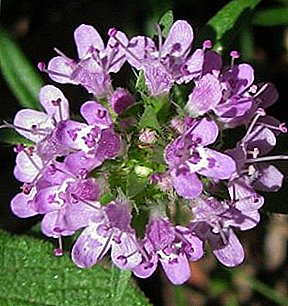
- Cuttings. In this way small varieties breed better. Shoots cut in spring are rooted in a container of sand.
The container is covered with a film; cuttings must be periodically refreshed with water from a spray bottle. Rooting occurs on the 15-20 day.
Disembarkation takes place one month after rooting.
Did you know? Thyme has healing properties due to the presence of thymol in the stem and leaves, which actively fights bacteria of the coccal flora, but is less toxic than other phenols.



